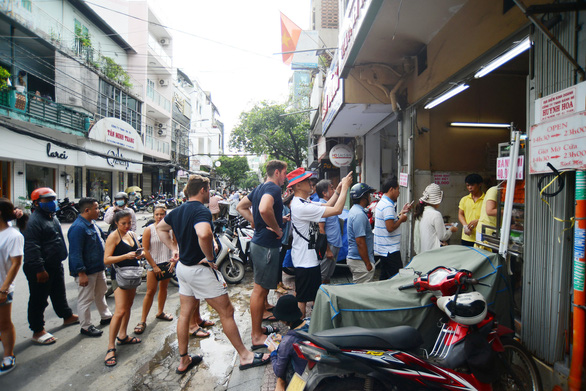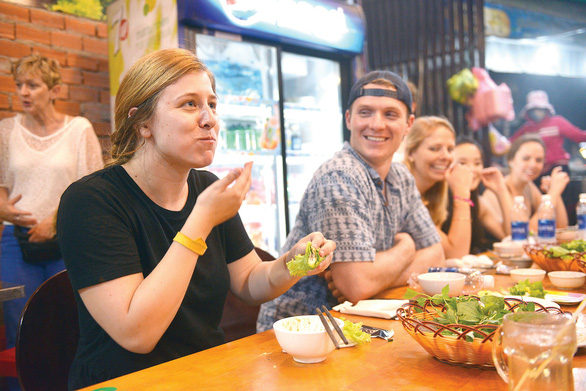The concept of "worth living, worth visiting" should be expressed through a specific branding image of culinary culture which is approachable by international tourists – a city where “Vietnamese taste” meets with “world’s kitchen.”
Ho Chi Minh City’s history has led it to become a crossroads of culinary cultures from across Vietnam. It is the only city where locals and visitors can sample flavors from across the country, allowing for the discovery of Vietnam’s richness and diversity.
The city is also famously known for a spirit of openness and integration as it’s often the first stop for tourists visiting Vietnam.
Ho Chi Minh City is where tourists can find great tasting local and international flavors at fantastic prices.
These characteristics should be capitalized upon to brand the city as “Vietnamese taste, word’s kitchen.”
To do so, there are four steps that need to be taken.
First, the city must host regional-level international food festivals. These festivals should be high-profile events capable of attracting enterprises, tourists, and residents. They should be held biennially for at least one month each. If done right, they will help to stimulate tourism throughout the country, as well as transform into events that local people are proud of.
Da Nang is known for its international firework festival, Da Lat is famous for flower festivals, and Hue has a big event called Hue festival. Ho Chi Minh City should raise its name with the largest food festival in Southeast Asia.
Ho Chi Minh City’s international food festival should host ‘cuisine weeks’, with each themed for foods from various ethnic groups, flavors from different continents, and street food styles.
This festival should also host world famous chefs and popular influences who can help promote the event.
Exhibitions featuring world’s cuisine should also be held during the festival.
 |
| A file photo shows people including both locals and tourists queuing up to buy banh mi at a famous stall on Le Thi Rieng Street in Ho Chi Minh City's District 1. Photo: Quang Dinh / Tuoi Tre |
The second step Ho Chi Minh City must take to make this dream a reality is to build a network of culinary ambassadors across the globe. This, which should allow for investment from private sector, should invite world-famous chefs with massive audiences to Vietnam where they can promote Ho Chi Minh City culinary culture.
Third, the city must develop a cuisine and travel channel system entitled Live Saigon. Live Saigon would be a collection of media channels where viewers can access reliable and unique information about the city.
The Live Saigon network would include an official YouTube channel featuring unique stories, a mobile-based application which allows users to search for cuisine experiences in Ho Chi Minh City, a digital library to store and showcase local cuisine visually, and a museum of Vietnamese culture and cuisine.
Last but not least, a project to develop Ho Chi Minh City’s typical culinary culture is necessary. The project should highlight the city’s culinary advantages, including the convergence of cuisines from across Vietnam and the world, street foods, the variety of price segments, and cuisine linked to the night economy.
The branding of “Vietnamese taste, world’s kitchen” could require a long-term effort with systematic, persistent and creative planning in five to ten years.
If it works, it would become a strong tourism brand which makes Ho Chi Minh City a desired destination for tourists while worth living for those who are in the city.
The original story was written in Vietnamese by Pham Trong Chinh and translated into English by Tuoi Tre News, in response to the 'Ho Chi Minh City Goes Global' contest, an open forum for readers to contribute their ideas and solutions to raise the position of Saigon - Ho Chi Minh City in the international arena.
The contest is co-organized by Tuoi Tre (Youth) Newspaper and the Ho Chi Minh City Department of External Relations to prepare for the celebration of National Day on September 2.
For further information and how to take part, please click here.
Like us on Facebook or follow us on Twitter to get the latest news about Vietnam!



























